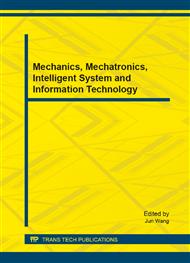p.620
p.627
p.633
p.638
p.642
p.647
p.653
p.658
p.667
Feature Recognition for Virtual Environments
Abstract:
This paper demonstrates methods to recognize 3D designed features for virtual environments and apply them to Virtual assembly. STEP is a standard of Product data Exchange for interfacing different design systems, but it cannot be used as input for virtual environments. In order to use feature data in virtual assembly environments, main data source from a STEP file should be recognized and features should be re-built. First, Attributed Adjacency Graph (AAG) is used to analyze and express the boundary representation; second, a feature-tree of a part is constructed; third, using the AAG and feature-tree as inputs, we analyze and extract of features with a feature recognition algorithm; finally, various levels of detail of object geometric shapes is built and expressed in XML for virtual assembly applications.
Info:
Periodical:
Pages:
642-646
Citation:
Online since:
August 2014
Authors:
Price:
Сopyright:
© 2014 Trans Tech Publications Ltd. All Rights Reserved
Share:
Citation:


